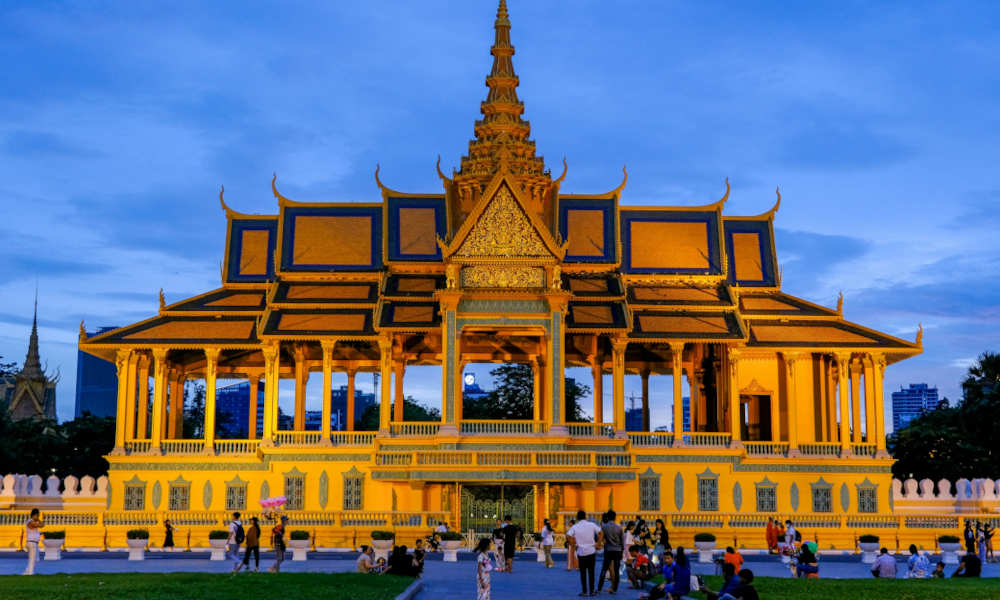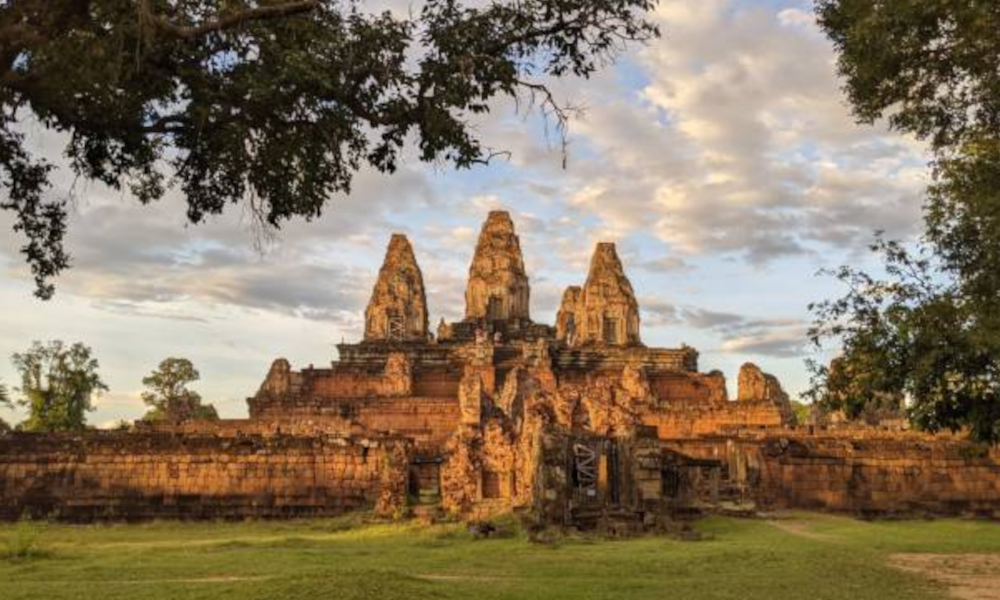Royal Palace of Cambodia

The Royal Palace in Phnom Penh, Cambodia, is a stunning architectural gem rich in history and cultural importance. Constructed in 1866 during King Norodom’s reign, this magnificent complex highlights the exquisite beauty of traditional Khmer architecture, featuring intricately crafted buildings, gilded rooftops, and elaborate decorations.
Table of Contents
ToggleAt the center of the palace grounds is the Silver Pagoda, a revered site with silver-tiled floors and home to valuable Buddha statues made of gold and diamonds. The Throne Hall, known for its unique Khmer-Thai-style roof, hosts royal ceremonies, enhancing the palace’s majestic charm. Surrounded by beautifully maintained gardens, the Royal Palace offers a peaceful escape for visitors, inviting them to delve into Cambodia’s royal past, cultural heritage, and the ongoing legacy of its monarchy. As a symbol of cultural pride and a popular tourist destination, the Royal Palace embodies Cambodia’s lasting cultural identity and royal heritage.
The Angkor Wat Grand Circuit Tour does not include a visit to Angkor Wat itself. Instead, the itinerary focuses on the temples located to the...
Layout and Design
The stunning tall spires of the palace buildings showcase the exquisite classic Khmer architecture that can still be admired in Cambodia today.
Visitors are invited to explore the Throne Hall (Preah Tineang Tevea Vinichhay), where important coronations and official events are held.
The gardens are meticulously maintained, adding to the palace’s charm. Among the various structures on the grounds are the Temple of the Emerald Buddha (Wat Preah Keo Morakot), Stupas (Chedi), the Royal Dining Hall, the Chan Chhaya Pavilion, and a French building gifted by Napoleon III.
Within the expansive 183,135 square meter area lies the Khemarin Palace, or Prasat Khemarin, which translates to “Palace of the Khmer King.” This is the official residence of His Majesty, King Norodom Sihamoni, and it is located in a secure section of the compound, making it inaccessible to the public.
History of Royal Palace
The Royal Palace in Phnom Penh is deeply rooted in Cambodia’s rich history, standing as a remarkable symbol of the nation’s cultural heritage and resilience. Built during the reign of King Norodom I in 1866, this expansive complex has witnessed the many changes in Cambodia’s journey, mirroring the dreams and influences of its rulers over the years. Its stunning architecture, featuring detailed carvings, magnificent gilded roofs, and vast gardens, beautifully combines traditional Khmer design with various historical influences.
Positioned at the meeting point of the Tonle Sap and Mekong Rivers, the Royal Palace has withstood significant political upheavals, including the French colonial period and the harrowing times of the Khmer Rouge. Despite the challenges it has faced, the palace has emerged as a beacon of Cambodia’s strength, undergoing careful restoration to maintain its historical and cultural importance.
At the center of the palace complex lies the Throne Hall, which has been pivotal in royal ceremonies and state events, hosting coronations and welcoming dignitaries. The Silver Pagoda, a key feature of the grounds, captivates visitors with its silver-tiled floors and houses invaluable religious treasures, including the esteemed Emerald Buddha and a collection of exquisite Buddha statues adorned with gold and diamonds.
In the aftermath of conflict, the Royal Palace has evolved from a royal residence into a fascinating attraction for visitors from around the globe. As tourists stroll through the beautifully kept gardens, discover the intricately designed halls, and observe the age-old customs of the Cambodian monarchy, they embark on a rich exploration of the country’s history and cultural legacy. Today, the Royal Palace is more than just a historical site; it serves as a lively symbol of Cambodia’s lasting cultural identity, welcoming everyone to admire its architectural beauty and recognize the strength woven into its revered spaces.
Best time to visit Royal Palace
The ideal time to explore the Royal Palace in Phnom Penh, Cambodia, is during the dry season, which usually runs from November to March. This time of year offers more comfortable weather with lower humidity, making it perfect for outdoor activities. December and January are especially nice, with cooler temperatures ranging from 20 to 30 degrees Celsius (68 to 86 degrees Fahrenheit).
It’s best to steer clear of the rainy season, which generally lasts from May to October. The heavy rainfall can cause flooding and muddy conditions, which can detract from the sightseeing experience. Moreover, the months leading up to the rainy season tend to be hotter and more humid in Cambodia.
Location & How to Get There
The Royal Palace is situated right in the center of Phnom Penh, Cambodia’s capital. Getting there is quite straightforward, and you have several transportation options:
1. Air Travel:
If you’re flying in from another city or country, the main airport is Phnom Penh International Airport (PNH). From there, you can easily take a taxi or arrange for a ride to the Royal Palace.
2. Taxi:
Taxis offer a convenient way to get to the Royal Palace from various locations in Phnom Penh. They are widely available, and you can either hail one on the street or request one through your hotel. Just be sure the taxi uses a meter or agrees on a fare before you start your trip.
3. Tuk-Tuk:
Tuk-tuks are a favored and budget-friendly way to travel around Phnom Penh. These open-air, three-wheeled vehicles provide a fun way to see the city. Remember to negotiate the fare with the driver before you hop in.
4. Moto (Motorcycle Taxi):
Motorcycle taxis, or “motos,” are another popular option in Phnom Penh. Similar to tuk-tuks, it’s best to agree on the fare in advance, and don’t forget to wear a helmet for safety.
5. Public Transportation:
While Phnom Penh has limited public transport, there are local buses and cyclos (bicycle rickshaws) available. However, these might not be the best choice for reaching specific tourist spots.
Always double-check the directions with your driver, especially if there’s a language barrier. The Royal Palace is a well-known landmark in Phnom Penh, and most locals will easily guide you to its location.

